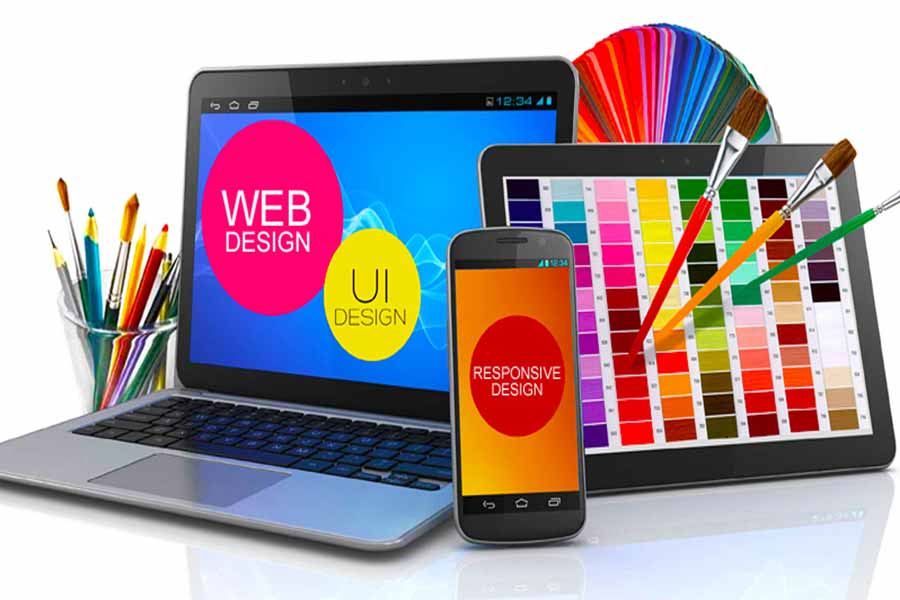Simply put, UI is about how a website, online store, mobile application, or any other resource looks like. Entering, for example, any website, the first thing you see is its UI design.
UI design is focused on creating an aesthetically pleasing interface for the user, so that when entering a site or application, the user does not “bleed from the eyes” from the terrible design.
UX design is responsible for the simplicity, clarity and convenience of the interface. Those. for how quickly and easily you, as a user, can find the information you need on the site.
The main difference between UI design and UX design is that you see the UI as soon as you enter any site or mobile application. You can’t “see” UX, but you can “feel” it.
If your eyes start to twitch when you enter a site because you cannot find the information you need, then the UX on this site is bad. On the other hand, the UX is well designed. Those. UX is more about design and analytics. Creativity has no place here.
Accordingly, those professionals who work in the field of UX UI design are called UX UI designers. And it turns out that these specialists combine both a creative profession (UI) and an analytical one (UX). Any project starts with UX and only then beauty is added in the form of various UI elements. If you do the opposite, then there is a great risk of drawing a beautiful site, but terribly inconvenient to use.

If you put these 2 directions on the scales, then in its importance UX will always outweigh UI. But this does not mean at all that you can “score” on the appearance of interfaces and make them “fuck off”. The ability to combine UX with UI is what separates a professional designer from a beginner.
More about UX design
The term was first introduced by Apple representatives back in 1993. At that time, no one thought about the usability of products, simply because there was not much demand for it.
Apple, on the other hand, decided to tread a new path and show users that interfaces can also be convenient. This experience turned out to be so successful that later everyone began to pay due attention to UX design.
What does user-friendliness mean in interfaces? This is when the user can easily get from the starting point to the logical conclusion without any extra actions. For example, go to an online store and place an order in a couple of clicks.
Responsibilities of a UX Designer
Niche and competitor analysis. At this stage, the ux designer analyzes the product niche and the closest competitors in order to highlight their strengths and weaknesses. Further, it conducts research of the target audience and finds out their main goals and desires in relation to the product.
Structuring and design. Based on the analysis, the UX designer builds the structure of the future product using information architecture and designs user interactions with the interface.
Prototyping. At this stage, the UX designer creates the first working prototype of the product. A prototype is a hypothesis that may change in the future.
Testing, analysis and improvements. After the release of the product, the UX designer analyzes the success or failure of their hypotheses. With the help of A / B tests, he identifies the most working options and makes adjustments to the product, if they are required.
As you can see, each next stage follows from the previous one. In simple terms, a UX designer builds a solid foundation for a future project.

Why UI UX design is one direction
Many may have a question, if UX and UI are completely different areas, then why combine them together? In fact, I was also tormented by this question for a long time. There are companies that separate UX and UI, and they have two completely different jobs. But in most companies, this position is combined.
On the one hand, this makes sense, because as a UX UI designer, it will be much easier for you to implement the project from start to finish. That is, from design to final design. Just because you already know and understand the whole essence that was laid down when designing UX, and drawing a UI will no longer be a big problem for you.
Problems can start when one person designs (UX) and the other “draws” (UI). In this case, there is a high risk that misunderstandings may arise between them. One will have questions, he will go to the second, so that he explains everything to him, and so on. There can be a huge number of such iterations, and all of them take a lot of time. But in the end, anyway, someone will misunderstand something, do it their own way, and then have to redo it.
